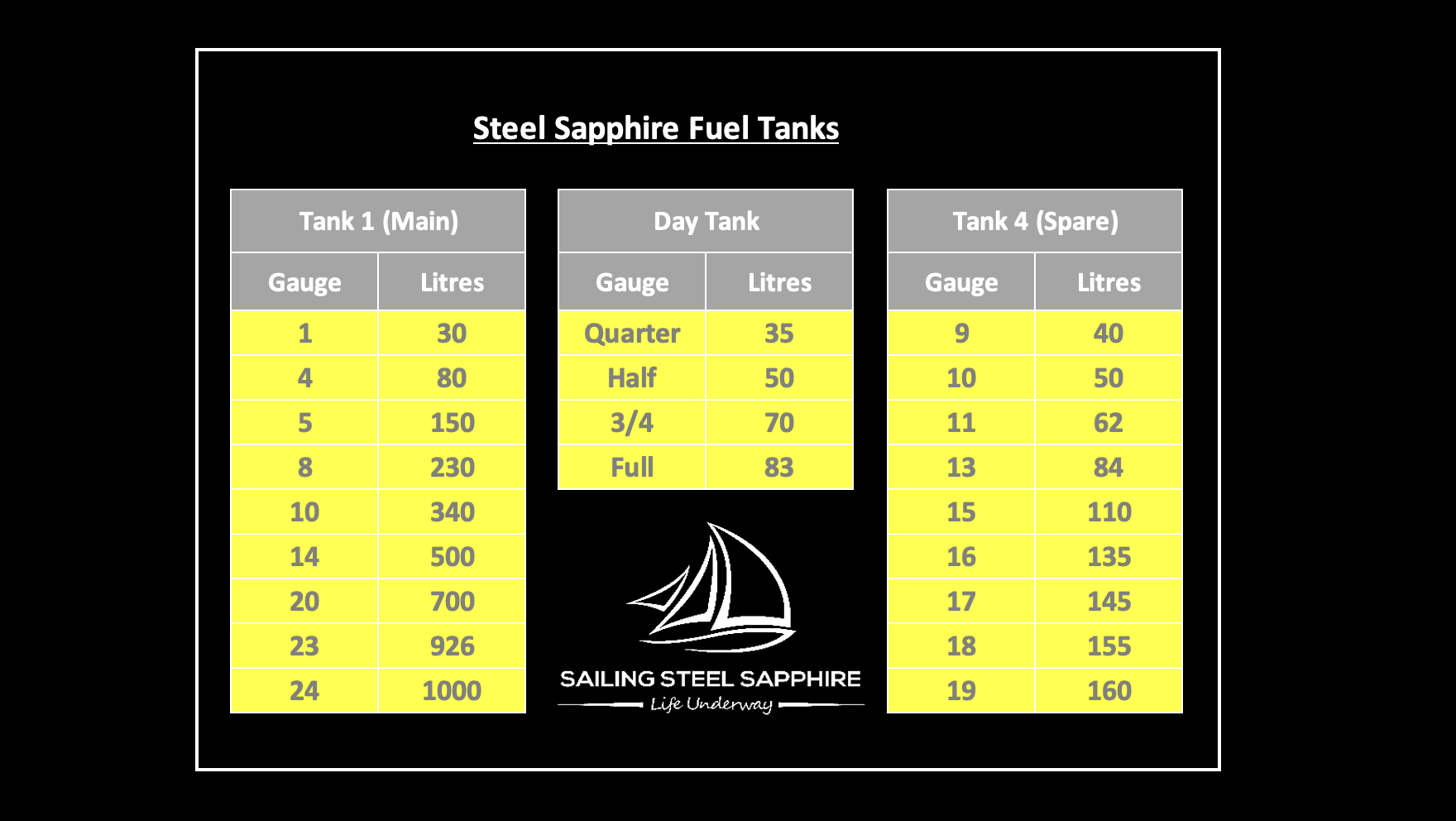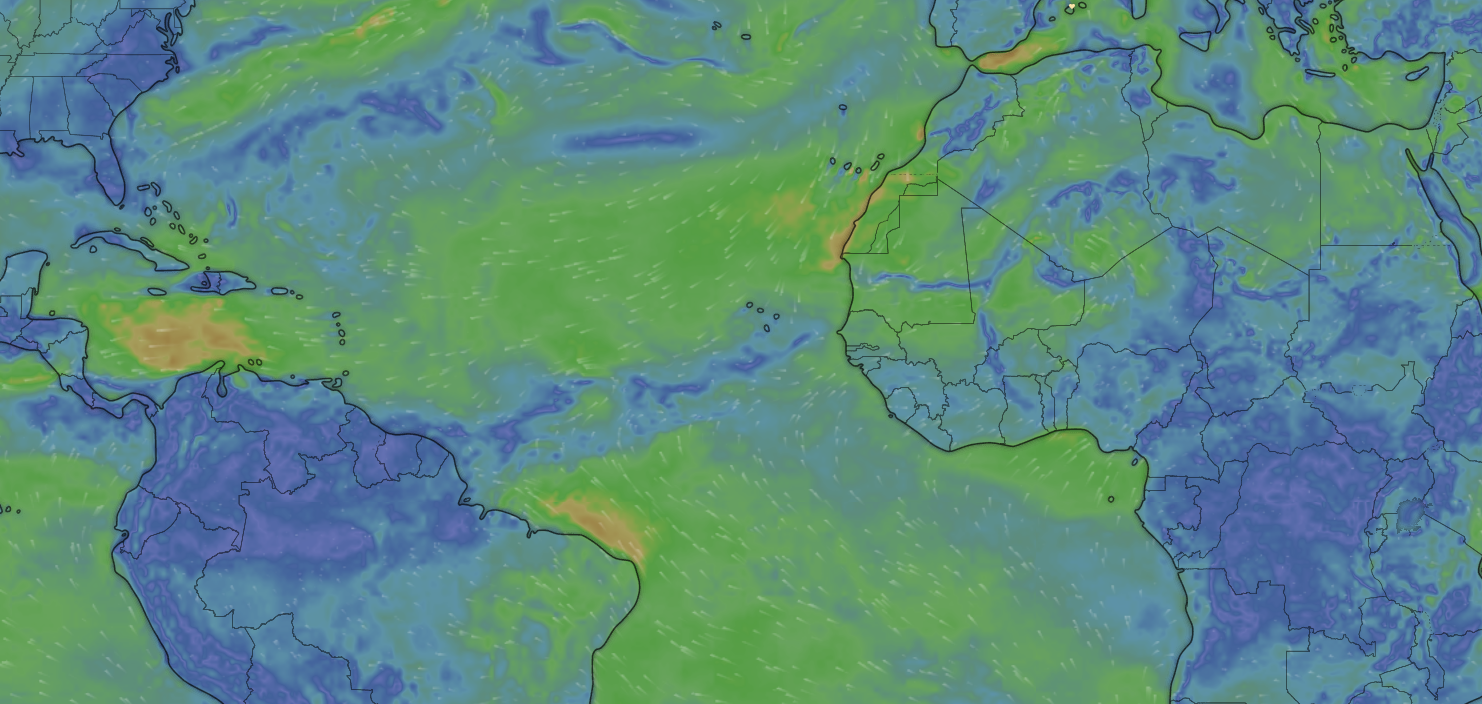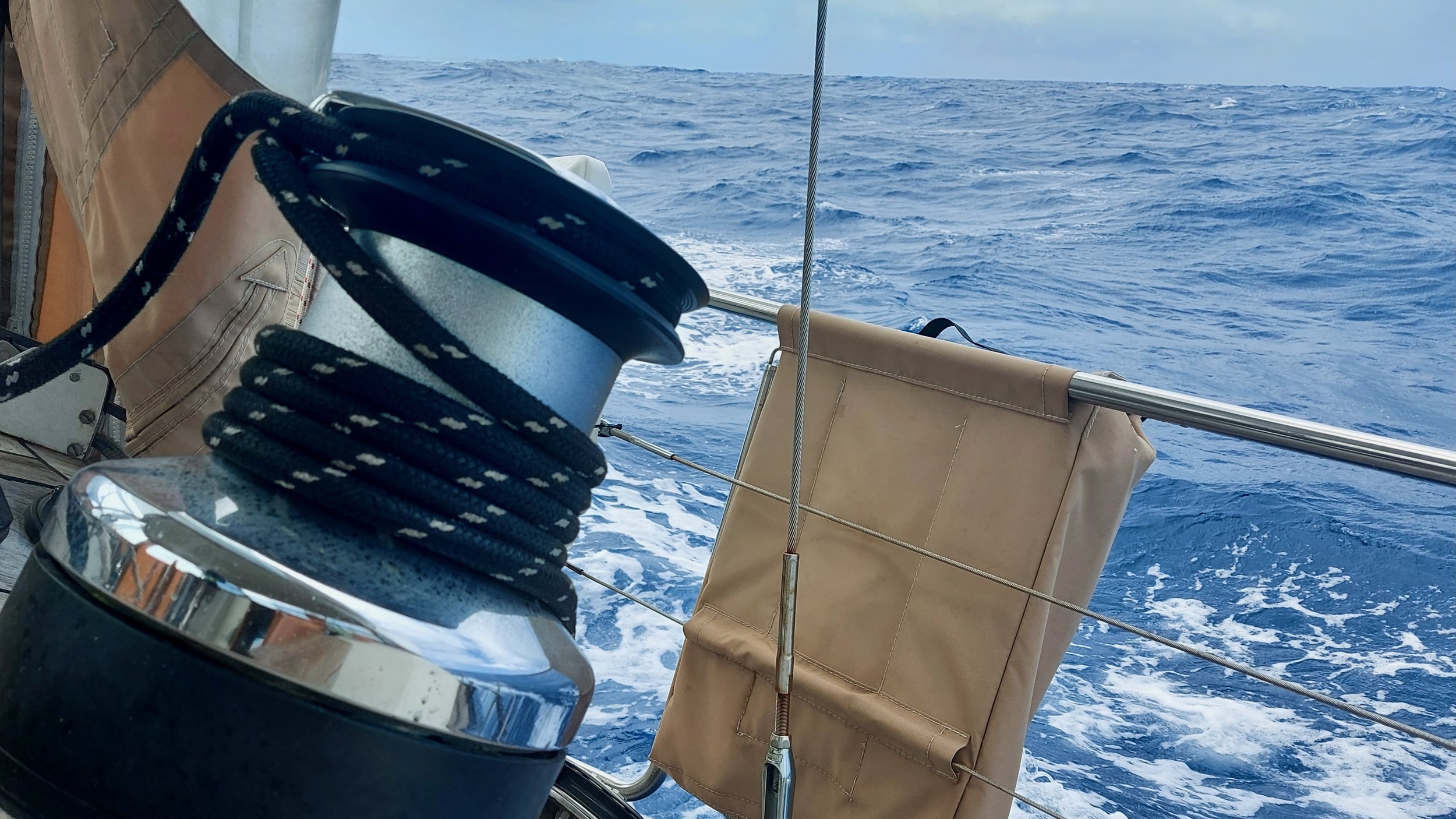Doldrums Diesel Decisions

Day 5 : Ascension Island to Azores
Tuesday, March 22nd 2022
On day 5, we reached Phase 2 of our passage – the Inter Tropical Convergence Zone (ITCZ), or the Doldrums.
Or to be more accurate, it reached us. As previously described, it moves from north to South, and expands or contracts on a daily basis. PredictWind had suggested that, rather than arriving with a bang, our wind would just slowly diminish over the next two or three days, until by Wednesday or Thursday, we’d have no wind and be motoring.
But it’s not only a lack of wind that denotes the ITCZ, but also large Cumulonimbus cloud formations, which build and build, and then unleash tons of rain and wind squalls, which blast through in a furious 20 minutes period before all returns to normal. These are pretty much impossible for weather forecasting to predict – they just happen when they happen.
Sometimes, those rain squalls can have the effect of sucking in the wind from around them, and that’s exactly what happened to us yesterday.
Around mid morning, we started to notice a few rain showers on the horizon. We were still sailing in the predicted 10-15 knots of wind, and making great time, but as the rain got closer, so the squalls ahead sucked all the wind out from around us, and we slowed to a crawl.
As always happens when the wind disappears suddenly, you’re left with some residual swell and waves, and not enough pressure in the sails. The boat rocks back and forward gently, but the slamming and banging noises from the sails and booms belies the gentleness of the motion.
This early arrival was a slight worry.
We have around 1,000 litres of diesel on board and although we’ve never come close to running out, if it was ever going to happen, this is the passage where it would do so.
Depending on how hard the autopilot is working, and how much sun we’re getting on the solar panels, we need to run the generator to recharge the battery bank for a minimum of 1 hour per day (or 2 hours every 2nd day). But a more comfortable and conservative allowance to keep the batteries fully topped up and not rely on solar is 2 hours per day.
We figure at most we have 33 more days to go (although hopefully a fair bit less), so that gives us a maximum diesel budget for the generator of 33 days x 2 hours per day x 1.5 litres per hour = 100 litres.
That leave us with 900, but we would never want to run down to empty - not just because of the desire for a margin of error, but also because the very bottom of the fuel tank is likely to have 28 years of accumulated sludge and crap down there which would probably block the filters if we ever had to suck down the last of it.
So our goal is never to get down below the last 20% of the tank (200 litres in our case), which gives us a working amount of diesel of 700 litres.
When motoring in flat seas (which by definition is the only motoring we should need to do on this passage), we burn 5.5 litres per hour at a speed of 5.5 knots. That makes it very easy to calculate - essentially, we burn one litre of diesel per mile.
So our 700 litres of usable fuel gives us 700 miles of motoring, plus the 200 left in the tank for emergencies.
(The writing of this blog was interrupted by the arrival of a huge pod of dolphins who swam alongside the boat for 45 minutes. Although we normally see dolphins at least a couple of times per passage, for some reason we’ve seen none between now and Cape Town, almost 3,500 miles ago. No matter how often it happens, though, it never gets old. Somehow, it seems all the more special at sunrise, though, with a rainbow on the horizon from the last rain squall 20 minutes earlier. Wish I could upload a picture to this blog.)
We knew going into this passage that there would be two phases where a bunch of motoring would be required – Phase 2 (the ITCZ), and Phase 4 (the Azores High). The tricky thing is both these areas of calm shift their location and size. Theoretically the ITCZ will require more motoring than the Azores high, as it’s usually quite a bit bigger, but we know that with the Azores High, what comes after that is the potential for big storms, so we may want to use our engines aggressively to get through quickly if there’s a suitable gap between weather systems.
By contrast, the only thing waiting for us at the end of the ITCZ is 15 days of hard upwind sailing, so we’re not in any great rush for that. We don’t mind sailing slowly here if that helps us to conserve fuel.
With that in mind, we’ve given ourselves a maximum fuel budget of 350 miles of motoring between here and the end of the ITCZ (leaving 350 miles for the Azores high). And as we ran out of steam yesterday, we still had 550 miles to go to where we’re predicting the wind will fill back in again.
That means a minimum of 200 miles of sailing in whatever puffs of wind we find. Steely is actually not too bad in light airs – we need at least 4 knots of wind (upwind), or 6 knots of wind (downwind) and we can sail at around 3 knots.
And given our lack of rush and desire to conserve fuel, we don’t mind sailing even slower than that - the bigger issue is that in less than 4 knots of wind, the swell takes over and the sails and boom start their cacophony again.
After that first initial rain shower passed, yesterday, the wind stubbornly refused to fill back in. And after slopping around for about 30 minutes, we could stand the banging no longer, and the engine went on.
And so the dance has begun. 3 times yesterday, the sails went away and the engine came on. And three more times, the wind built enough that we could sail, albeit slowly, and the engine went off. As I type this at 7am, we’ve been sailing since 9pm last night, and every mile sailed feels like a minor victory.
Day 5 Statistics:
Time on passage so far: 4 days, 21 hours
Distance covered in last 24 hours: 119 nm
Average Speed in last 24 hours: 4.9 knots
Official Length of intended Route when we set out: 3,480 nm
Current Projected Distance to Go according to chart plotter: 2,957
Distance Sailed so Far: 652 nm
Total Projected Distance of Route: (2,849+652) 3,501
Change in total projected distance in last 24 hours: +11 miles
Amount of fuel used so far from 350 litre ITCZ fuel budget: 33 litres (6 hours x 5.5 l/h)
Estimated miles to go until end of ITCZ : 484
Amount of motoring miles remaining in budget: 317





